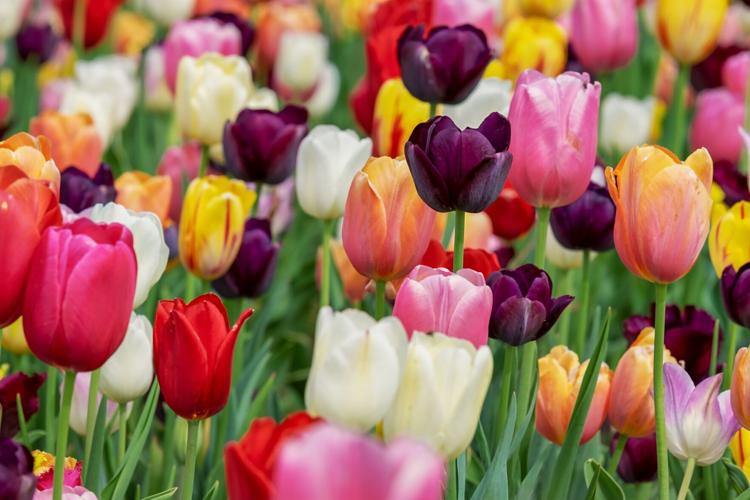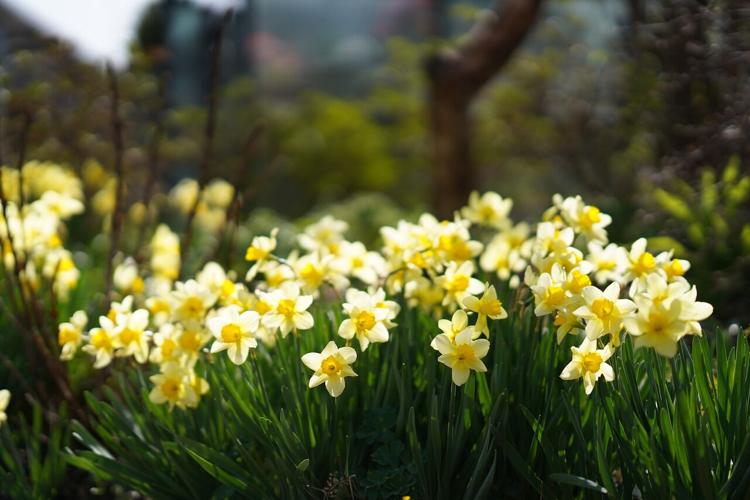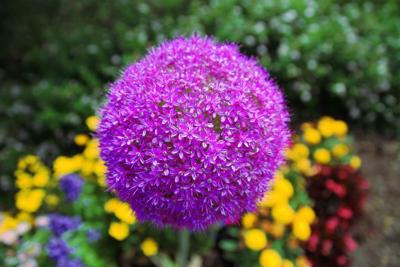Mid-fall is the ideal time for planting spring-blooming bulbs in Pennsylvania. But if deer feast on your garden, planting bulbs may seem like nothing more than a dinner invitation. This is particularly true if you’re partial to tulips.
In fact, if deer could plan that dinner menu, there’d be nothing but tulips. There’s no other spring-blooming bulb they’d rather chow down on.
So it’s simple, right? If deer love tulips, just don’t plant tulips. There are plenty of other bulbs.
However, when bulbs start emerging in late winter and very early spring, little else is growing. Deer have already eaten through everything they can find in the landscape. They are hungry, and at this point, not picky. When they see something fresh and green, they’ll nip it right down to the soil line.

Daffodils contain a toxin that wildlife avoid, and there are thousands of varieties to choose from.
So while deer prefer tulips, when desperate they will eat almost anything. This is why gardening experts always caution that no plant is truly deer-proof, only deer-resistant.
Deer primarily eat a bulb’s foliage and flowers, but have been known to eat the bulb itself if they can get to it.
Most of the bulbs deer and other wildlife do leave alone (or at least leave for last) have one thing in common: they contain chemical compounds that are toxic. Deer and other wildlife know to steer clear or risk getting sick.
Deer are also sensitive to scents. Many flower fragrances that appeal to us, like hyacinths, deer find unpleasant.

Hyacinths repel deer two ways: They contain calcium oxalate, which is toxic, plus deer don’t like the fragrance of the flowers.
5 Bulbs That Make Deer Steer Clear
The good news is that there are spring-flowering bulbs deer will either not eat, or turn to only when there are no other options. Here are five:
Alliums (Allium): Ornamental alliums are members of the onion/garlic family, and contain sulfur. Deer don’t like the taste, or the smell. Alliums are a great alternative to tulips if you are looking for shades of purple and pink.
Daffodils (Narcissus): All parts of a daffodil – bulb, foliage, and flowers – contain the toxin lycorine. Some are also fragrant, which deer dislike. There are thousands of daffodil cultivars to choose from. Colors range from purest white, through every shade of yellow, as well as oranges and pinks.
Grape hyacinths (Muscari): Grape hyacinth flowers look like tiny clusters of grapes, but don’t smell like them. The Greek name for this plant means “musk”, and deer find the scent off-putting. Colors range from light to deep purples and white.
Hyacinths (Hyacinthus): Hyacinth bulbs, leaves, and flowers contain calcium oxalate, which is poisonous. And the heady fragrance of hyacinths, so lovely to us, is quite unpleasant to deer. Colors include pinks, blues, purples, yellow and white.
Snowdrops (Galathus): Like daffodils, they contain lycorine. Snowdrop flowers are bright white. The first bulbs to bloom in our area, they provide nectar and pollen for the earliest pollinators.

Deer prefer eating tulips over other spring-blooming bulbs.
Protecting Your Bulbs From Deer
Rutgers University in NJ compiled a list of deer-resistant plants, rating them from A (rarely damaged) to D (frequently severely damaged). Alliums and daffodils were rated A. Tulips rated a D.
Have deer, but must have tulips? While protecting them is tough, it’s not impossible. Fencing is the surest option, but not always feasible due to cost or terrain. Repellents work, yet can be expensive and need to be regularly reapplied.
Another option is strategic planting. Though success isn’t guaranteed, it’s worth a shot. Surround your deer-vulnerable flowering bulbs with others the deer dislike, those alliums, hyacinths and daffodils.
Perennials deer avoid include hellebores, lily-of-the-valley, and Japanese forest grass (Hakonechloa), plus aromatic plants such as lavender, mint, and dianthus.
Finally, if you long for the vibrant pink, purple, and red color palette that tulips offer, don’t try substituting pansies or violas. Deer love them almost as much as tulips.







